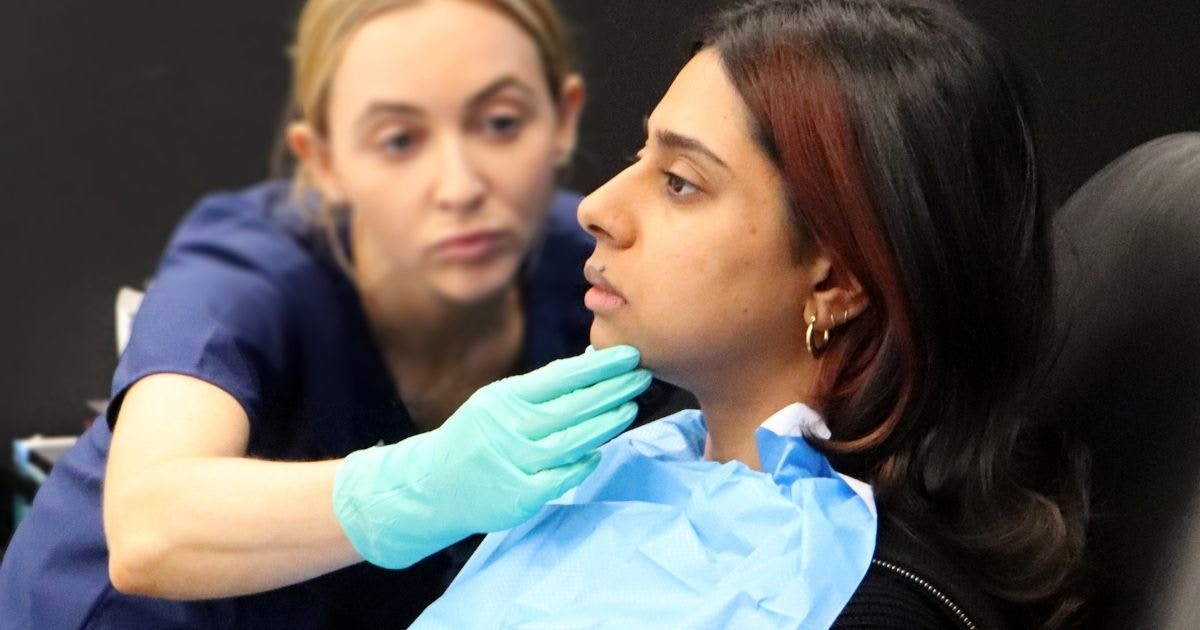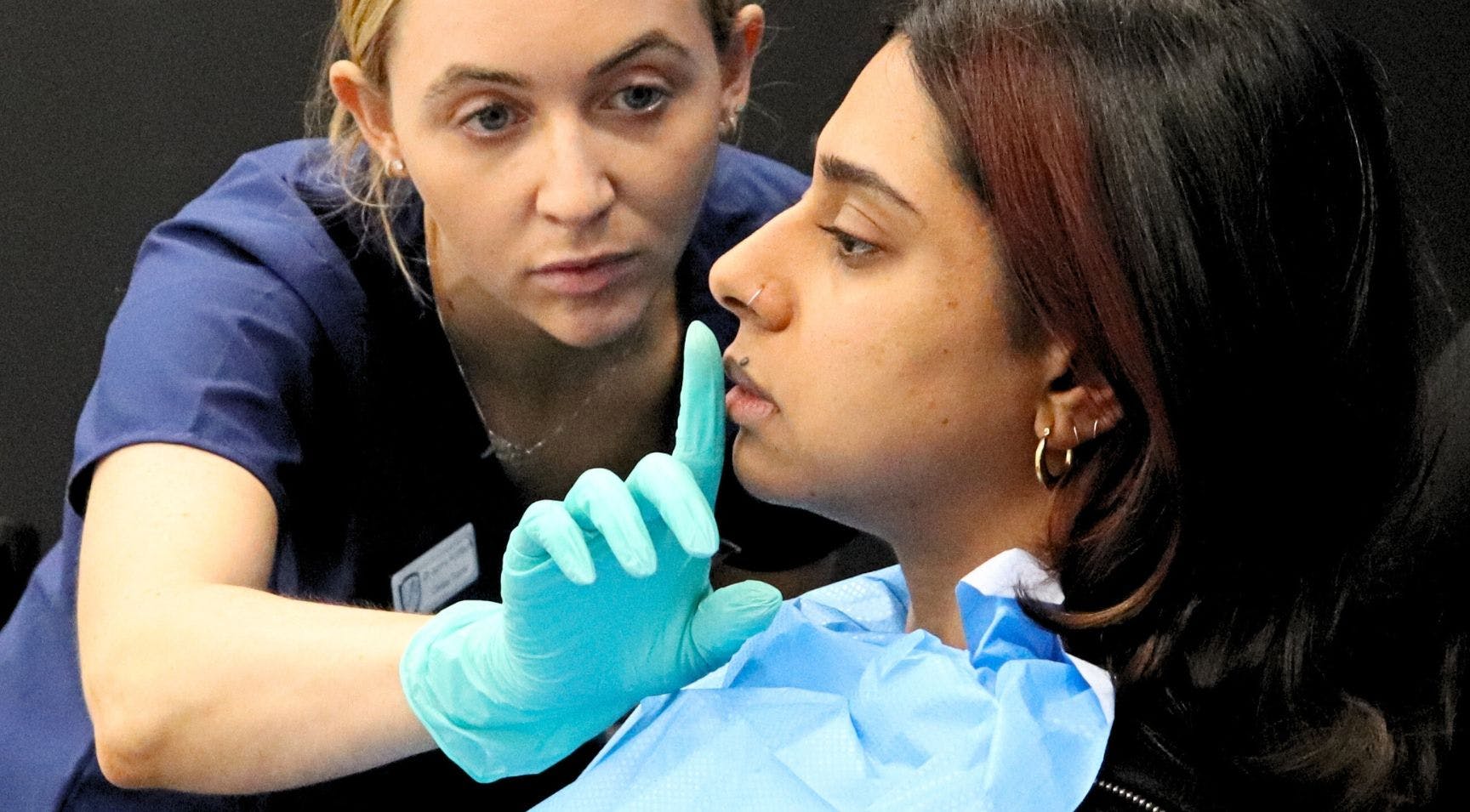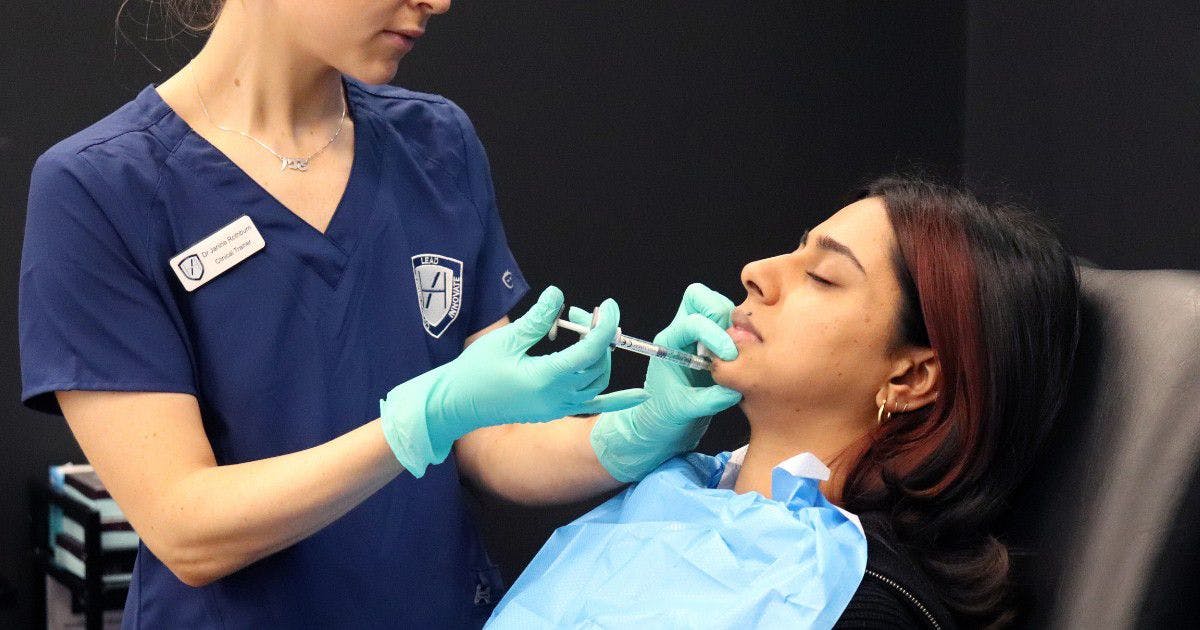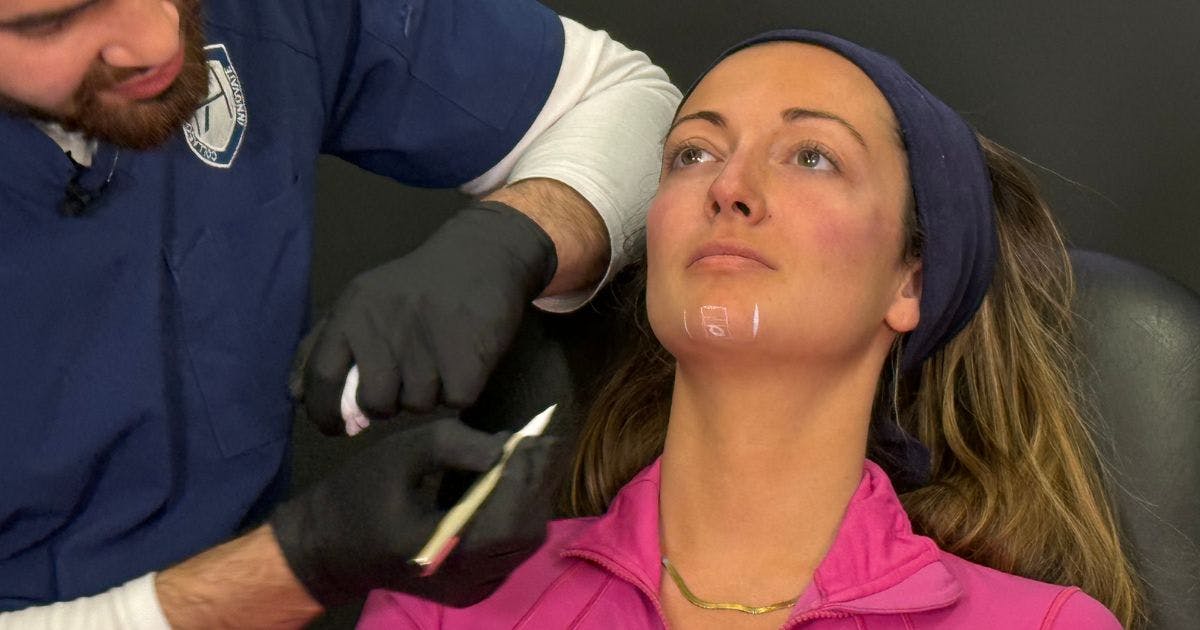Chin Filler Technique: The Lateral to Medial Approach

The lateral to medial approach is a chin filler technique that aims to replace lost volume, balancing a patient’s proportions.
We explore what medical aesthetics practitioners need to know about this method, when to use it and why.
A recent study published in the Journal of Clinical and Aesthetic Dermatology examines the lateral to medial approach. Conducted by a team in California, United States, the case series aims to describe a modified injection technique.
Clinical Trainer at Harley Academy and aesthetics expert, Dr Lindsay Jones discusses the paper’s claims and limitations, plus her experience.

The limitation of case studies in aesthetic medicine
We asked Dr Lindsay for her thoughts on the aforementioned study. She notes that "while it’s fantastic to see more medical practitioners engaging in aesthetics research, there are several limitations."
She explains that "Case studies are only level three evidence using the Scottish Intercollegiate Guidelines Network (SIGN)." Multiple tiers of evidence exist.
Dr Lindsay continues by saying "To apply evidence practice at a population level, a higher grade of it such as randomised control trials, is required."
The need for further research is also acknowledged by the paper's authors.
Dr Lindsay suggests that while this is a good preliminary study, it’s restricted in the following ways:
- It features three patients and, thus cannot be extrapolated to all patient groups
- Limited to female patients, therefore not applicable to the male population
- No mention of the patient’s ethnicity or cultural differences
- It doesn’t include who was assessing, leading to unconscious bias reporting
- No mention of the rare, but significant possibility of arterial supply variation in the chin. This is particularly true in the ascending portion of the submental arteries. Assuming the ascending submental arteries will always arise in this typical paramedian pattern gives a false sense of security.
What’s your experience with the lateral to medial chin filler technique?
"Working from lateral to medial is a great approach to use with augmenting any area of the face." Dr Lindsay notes.
"Generally, we advise this at Harley Academy as well as working from superior to inferior and deep to superficial.
"The study proposes an interesting technique for the chin as we aim to create a forward projection. Ideally, you don’t want to overfill the pre-jowl sulcus and marionette lines area. Thus I would usually encourage my student to do the midline injection first before tackling the prejowl sulcus so working from medial to lateral", Dr Lindsay comments.
She continues "It would be great to see a study comparing these two approaches, as this investigation does not prove superiority."

What are the best techniques and tools to use for administering chin filler?
When tackling the chin to create projection and definition, Dr Lindsay recommends using a "firm, high G prime filler." She also suggests that aesthetics practitioners should consider a patient’s skin quality and gender when choosing filler products and brands.
For the most up-to-date, evidence-based information on tools, products, techniques and more, check out GEM by Harley Academy - the Global Evidence Matrix
Needle vs cannula
These are both tools to master as an injector and require practice to become proficient. In her own aesthetics practice, Dr Lindsay explains that "she uses a mixture of both needle and cannula technique. This depends on what the patient's needs are too.
"I would generally start with a needle onto the bone in the midline, followed with a needle onto the bone in the pre-jowl sulcus. If further work is needed, I may use a 25g cannula in layer 2, along the jawline between the mandibular ligament and the menton", she explains.
Dr Lindsay states this same entry point can be used to tackle the mental crease and the marionette lines.
"Some practitioners may advise a cannula technique for deep work in the midline of the chin. I’ve found that this can be painful for patients, due to the tight adherence of the mentalis muscle to the bone", she notes.
What’s the first technique new practitioners should master?
"The supra-periosteal bolus technique is the most basic one for aesthetic practitioners to grasp", Dr Lindery comments. At Harley Academy, it’s the first one taught to trainees as it can be used in various areas of the face.
She further states that this is not an easy technique, "The difficulty of mastering steady hands and maintaining contact with the periosteum, whilst aspirating and then delivering product, should not be underestimated."

Mistakes new aesthetics practitioners tend to make and how to avoid them
Dr Lindsay recalls the most common mistake new injectors make is "not considering the chin in the first place.”
What she means by this is, regardless of the patient’s request, "it’s our job to examine the whole face. We need to assess the impact of other areas from the patient’s desired treatment. This is particularly important if an aesthetics patient has asked for lip filler. The chin, lip and nose have proportions that need to be considered and respected", Dr Lindsay comments.
She goes on to advise that "If the chin is under-projected or the mid-face is deflated – this needs to be addressed before administrating lip filler.”
Overfilling the chin area
The second most frequent mistake new aesthetic medicine practitioners make is overfilling the chin.
“Whilst you can improve the lower face by enhancing the chin, it’s important not to overdo it”, she warns.
In pursuit of the triangle of youth, chin and cheek filler treatments can lead to an unnatural look.
“To avoid this, medical aesthetics practitioners should assess the patient’s chin projection in true lateral position using Frankfurt’s plane.” Dr Lindsay recommends.
Overfilling the lower face in general can lead to a more aged appearance, by reversing the triangle of youth. It can also create a masculinisation of the features, therefore practitioners should look at the face as a whole in all planes.
Master the art of balancing proportions for your aesthetic patients
Dr Lindsay advises any medical practitioners considering a career in aesthetic medicine to choose an extensive course. Our Level 7 is a great example of this as it provides hands-on practice under supervision.
The Level 7 Diploma in Cosmetic Injectables is regulated by Ofqual and approved by the JCCP. Our experienced clinical trainers are specialists in the field of aesthetics. From anatomy to injecting techniques, our trainers will coach you through the process and support you from start to finish. With our Level 7 Diploma, you get to practice using a needle and cannula in a working clinic. Plus you get your own patients – you don't share.
Additionally, all our Level 7 trainees receive a free 12-month subscription to GEM by Harley Academy - the Global Evidence Matrix - digital platform. This groundbreaking framework is unique within the aesthetic medicine industry and is designed to support and enhance your learning at all stages of your career.
Whether you're a visual learner or want to get down into the detail of the text, you'll find all the most up-to-date, evidence-based information you need. What's more, GEM is tailored to your level of expertise, so it can educate and elevate at every turn, whether you're a novice, intermediate or expert aesthetic practitioner.
By breaking down complex teachings into accessible, manageable sections, including specially-commissioned 3D diagrams, animations and 4K HD narrated treatment demonstration videos, GEM makes it easy to understand optimal practise strategies and concepts.
For more targeted training, take a look at our Facial Contouring Masterclass. Here, you’ll learn to sculpt and contour the midface and lower face to balance proportions. It’s the perfect course to expand your filler technique skillset and treatments. Ready to get started on your aesthetics career today? Book a call with one of our experienced Course Advisors and explore more tailored learning options suited to your needs
All information correct at the time of publication
Download our full prospectus
Browse all our injectables, dermal fillers and cosmetic dermatology courses in one document
By submitting this form, you agree to receive marketing about our products, events, promotions and exclusive content. Consent is not a condition of purchase, and no purchase is necessary. Message frequency varies. View our Privacy Policy and Terms & Conditions
Attend our FREE open evening
If you're not sure which course is right for you, let us help
Join us online or in-person at our free open evening to learn more
Our Partners














STAY INFORMED
Sign up to receive industry news, careers advice, special offers and information on Harley Academy courses and services

